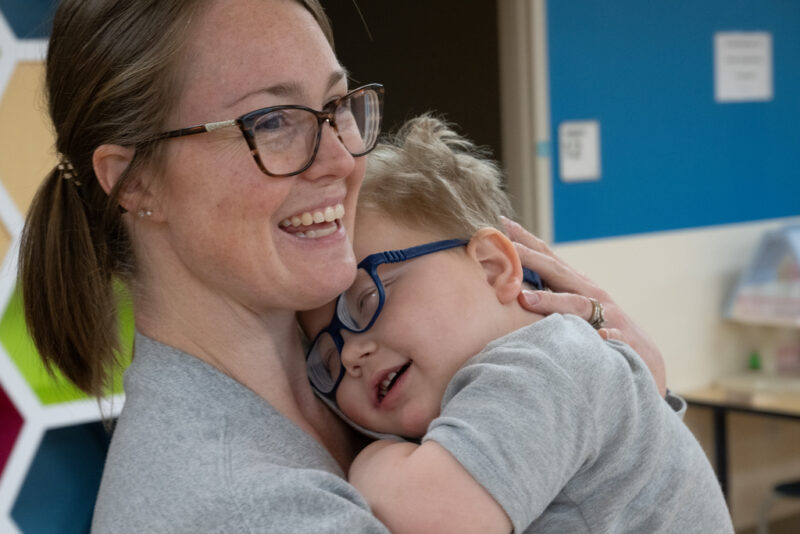
Shanelle Beachy snuggles her son, Reid, during one of his therapy sessions.
For Shanelle Beachy, the two-hour roundtrip drive to Akron Children’s Hospital has become a familiar route. Three times a week, she makes the trip from her family’s home in Sugarcreek, determined to give her son Reid, age 2 ½, the best possible care.
Reid, a happy and thriving toddler, had his world turned upside down at just 15 months old when he contracted bacterial meningitis – ravaging his body, and leading to kidney failure, brain damage and paralysis.
It all started in October 2022.
“His older sister was sick, so I figured he probably caught what she had,” said Shanelle. “But his fever spiked, and he began throwing up.”
Although Shanelle took Reid to a few different providers in her community, Reid wasn’t showing any signs of improvement after 3 days so she and her husband, Robert, drove him to Akron Children’s ER.
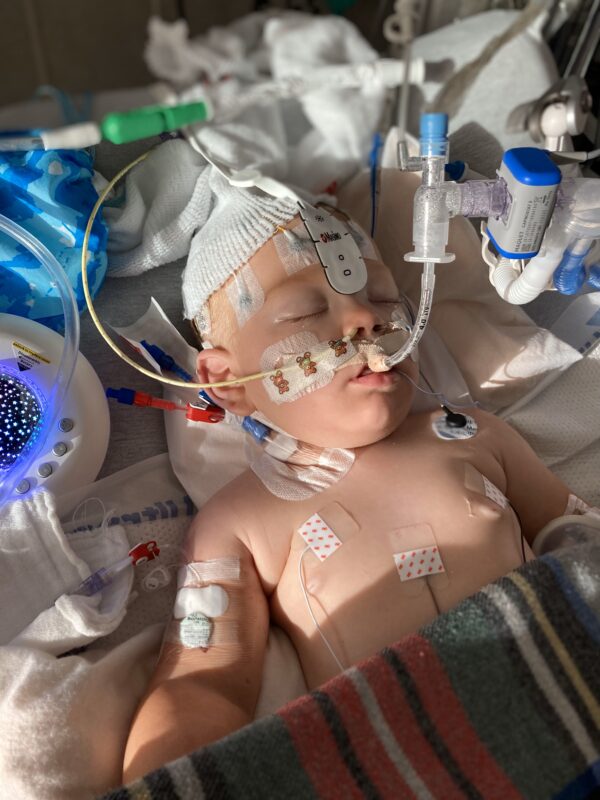
Reid was admitted to Akron Children’s with sepsis. His parents were told to prepare for the worst.
“I knew something was very wrong with him,” said Shanelle. “When we got to Akron, I noticed his eyes were dilated two different sizes.”
Tests revealed Reid’s condition was critical. He was intubated and admitted to the pediatric intensive care unit (PICU) with sepsis (a serious blood infection). Because he was so sick, providers weren’t able to do a spinal tap to identify his exact infection, which later turned out to be bacterial meningitis.
“We were told most kids don’t last more than 24 hours with what he had,” Shanelle said.
As Reid hung on, his kidneys began to fail, and he was put on continuous renal replacement therapy (CRRT), a continuous form of dialysis. Reid also began having seizures. Months later, a full body CT showed severe hydrocephalus (buildup of fluid in the brain).
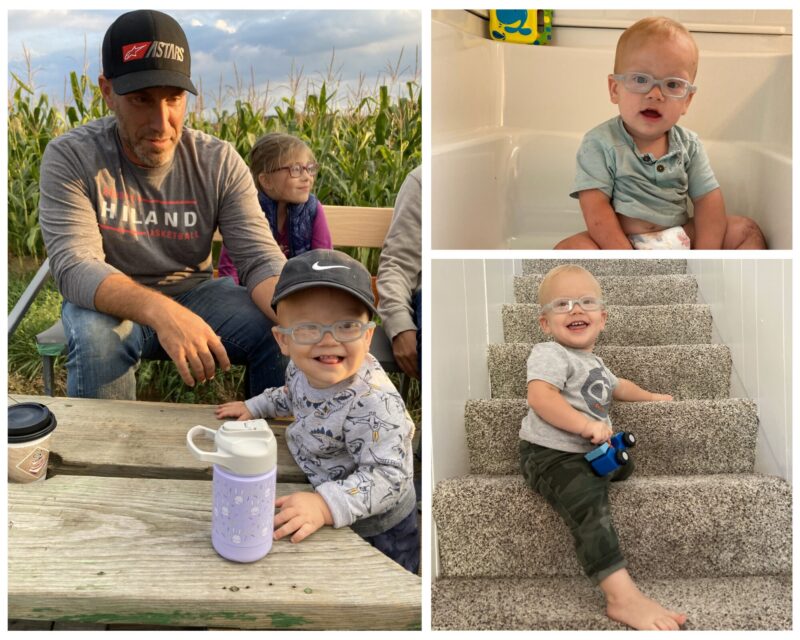
Prior to getting sick, Reid was a typical toddler hitting all his developmental milestones.
Neurosurgeon Dr. Tsulee Chen placed a shunt to alleviate the fluid in his brain. After trying a peritoneal catheter (which uses the lining of the abdomen, or belly, to filter the blood) for dialysis, Reid developed a fungal peritoneal infection and needed his peritoneal catheter removed.
Dr. Stephen Cha, Reid’s nephrologist, worked to figure out the best way to dialyze him. When it became clear his kidney function wouldn’t be returning, Reid had a permanent hemodialysis catheter placed for regular hemodialysis sessions.
“Reid was constantly changing, so we had to adjust our thought process and treatment plan based on what he showed us on a regular basis,” said Dr. Cha.
After a grueling 6 months, Reid was finally stable enough to go home, although he couldn’t sit up, communicate or eat on his own. Reid continues to require constant care, including feeding through a tube and intensive therapy sessions.
Although it’s been almost a year since his discharge, he returns to Akron Children’s three times a week for dialysis and therapy.
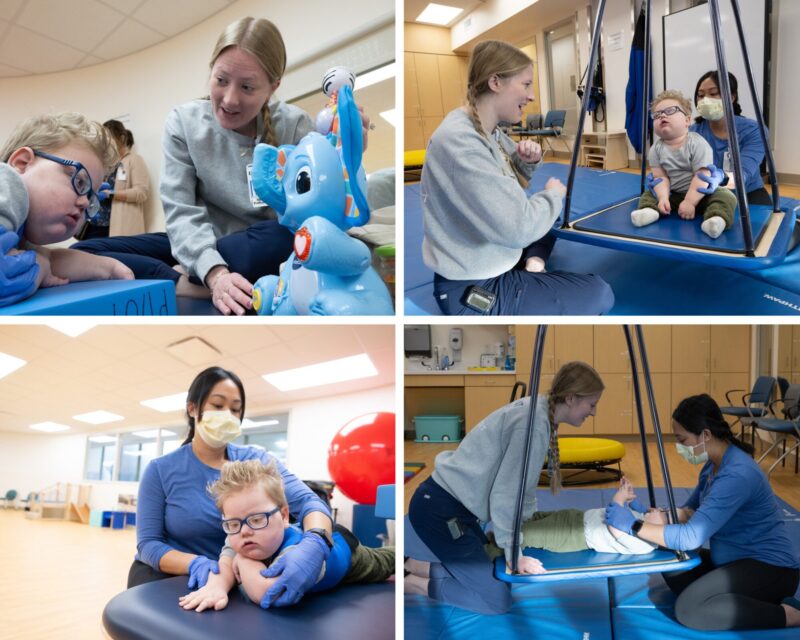
Reid receives weekly occupational and speech therapy at Akron Children’s. His therapists say his self awareness is increasing and that he shows increased visual attention and more purposeful vocalizations to express what he wants. He’s pictured here with speech therapist Emily Headington (top left) and occupational therapist Cheryl Mae Rahz (bottom left).
“Dialysis has been a process,” said Shanelle. “It used to take 8 hours, but now we have it down to around 4 hours.”
Shanelle said someone must sit by Reid’s bedside during dialysis to keep him entertained and make sure he doesn’t pull on his lines.
According to Dr. Cha, the ultimate goal for Reid is a kidney transplant.
“Reid has already met the height and weight requirements, now he just needs to get caught up on his childhood immunizations before we can start the transplant process,” he said.
The Beachys hope to find a living donor, either a family member or someone unrelated, who’s a match for Reid.
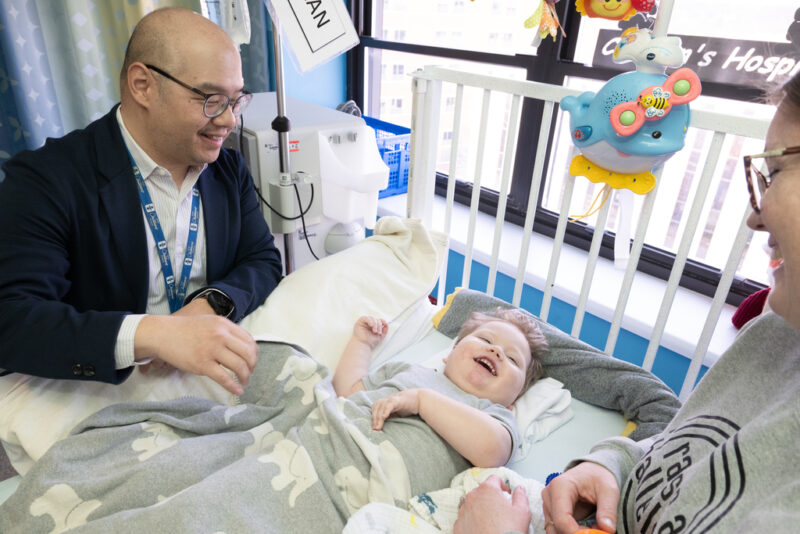
Reid undergoes dialysis to clean his blood and pull fluid from his body three times a week. He’s pictured here with his nephrologist Dr. Stephen Cha.
“It’s a long process,” said Dr. Cha. “But once Reid receives a kidney, the hope is it will last for 10-15 years or more before he needs another one.”
Reid also receives regular physical, occupational and speech therapy. His speech therapist, Emily Headington, has seen him make strides.
“He shows increased visual attention and is using more purposeful vocalizations to express what he wants,” she said. “We’ve been offering trace tastes (putting small amounts of purees on a spoon). He has recently started to show more interest in self-feeding by bringing the spoon to his mouth by himself, but he will need a swallow study before he can begin eating foods by mouth.”
Cheryl Mae Rahz, Reid’s occupational therapist, said the improvements he’s making in his gross motor skills are apparent.
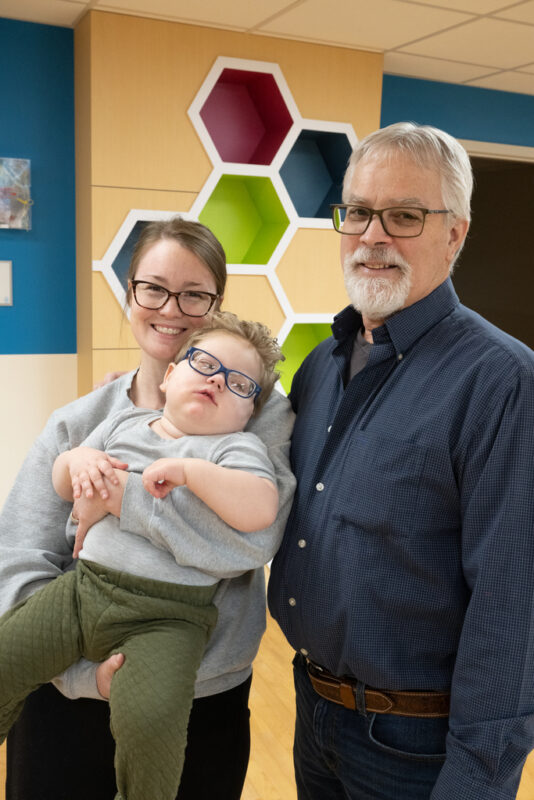
Shanelle’s dad, Jalen Miller, accompanies her to appointments when he can. He helps with driving and entertaining Reid during dialysis.
“His self-awareness is increasing. We hope he’ll be sitting on his own soon,” she said. “We place a vest on him during therapy sessions to help with his core strength.”
Despite the challenges, the Beachy family remains optimistic.
“We lean on our faith, family and community, they have been a great support system,” said Shanelle. “We’re also very grateful to the team at Akron Children’s who continues to walk through this journey with us.”










